Properly completing Form POA-1
Please refer to the examples, below, for guidance when completing, revoking, or withdrawing Form POA-1, Power of Attorney.
- When your tax type is not listed
- When your Form POA-1 is for an audit case
- When your Form POA-1 is for an assessment
- When your Form POA-1 is for a collection case
- When your Form POA-1 is for an offer in compromise
- When your Form POA-1 is for a conciliation conference or Tax Appeals hearing
- When your Form POA-1 includes a limitation
- When your Form POA-1 is only for a specific period
- When your Form POA-1 is only for a specific transaction
- When you need to attach additional documentation identifying representatives
- When your representative needs to withdraw
- When you need to revoke
- When you're ready to sign
Example: When your tax type is not listed
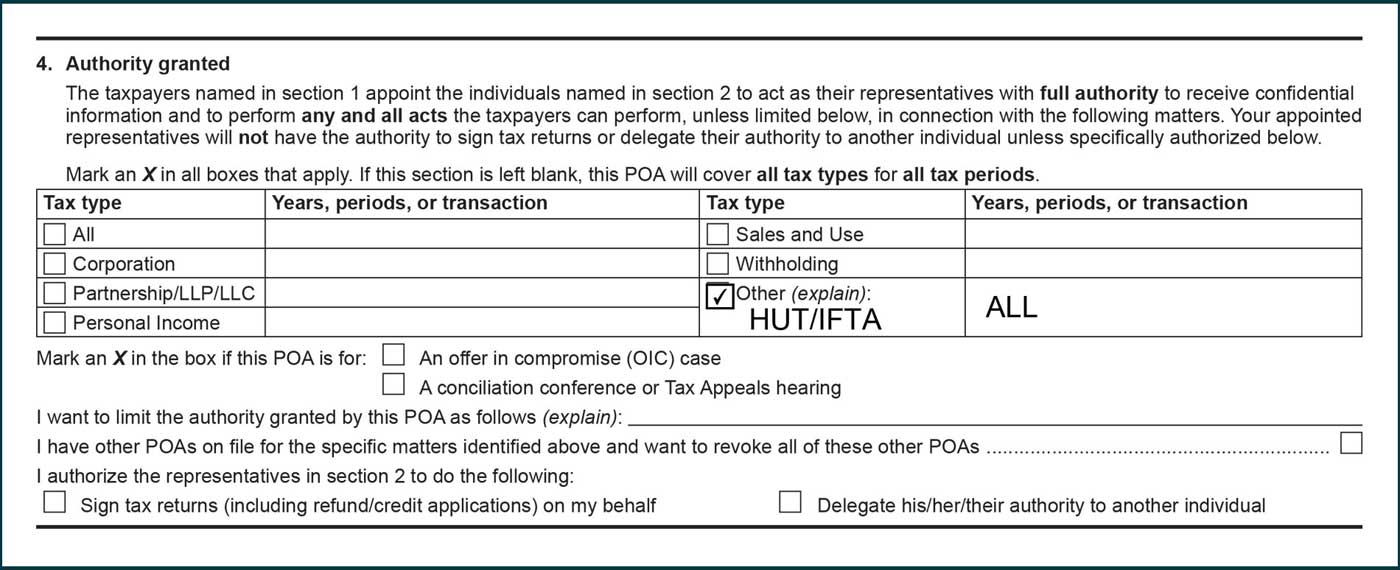
Example: When your Form POA-1 is for an audit case
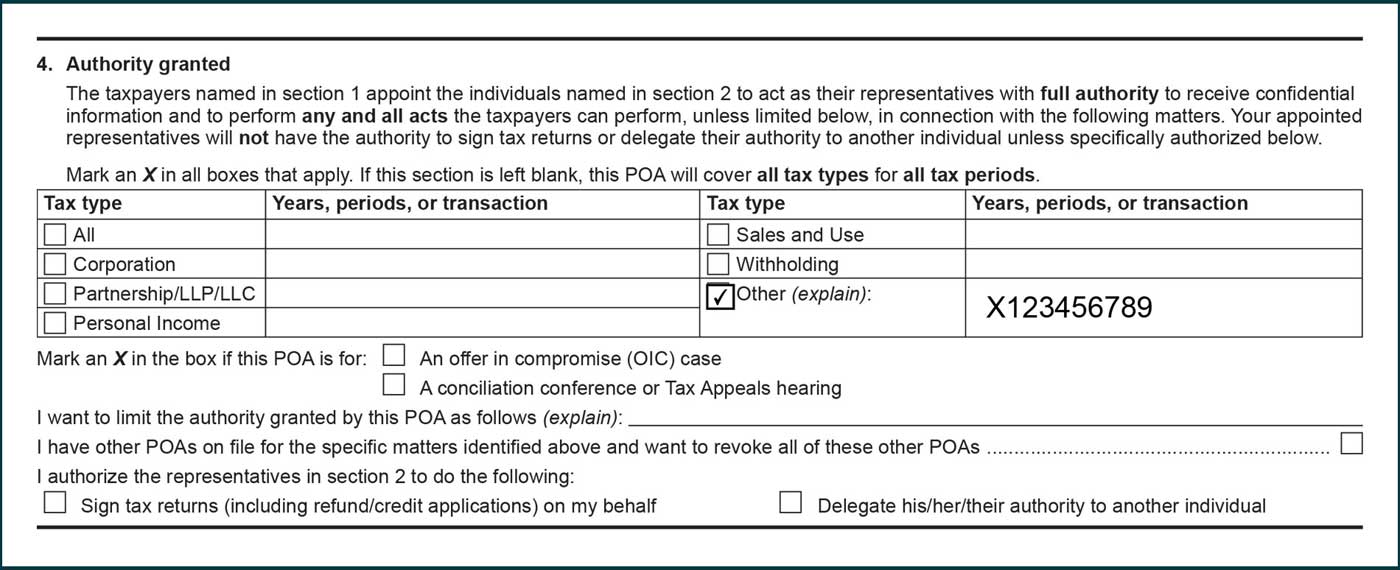
Example: When your Form POA-1 is for an assessment

Example: When your Form POA-1 is for a collection case
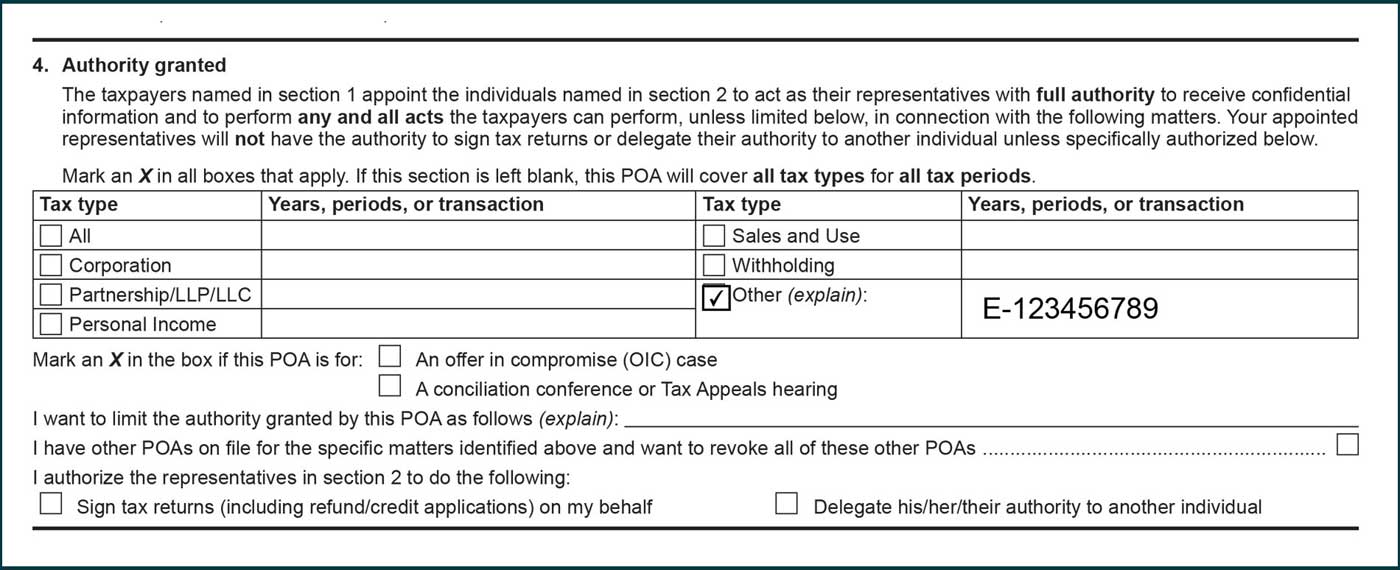
Example: When your Form POA-1 is for an offer in compromise
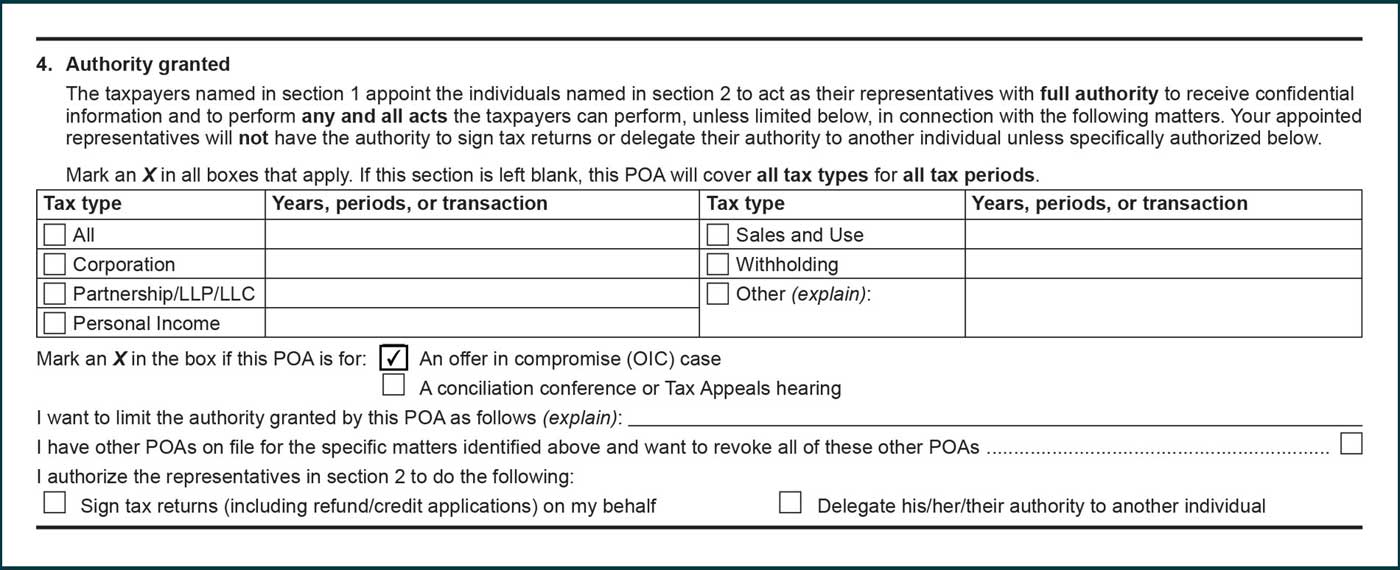
Example: When your Form POA-1 is for a conciliation conference or Tax Appeals hearing
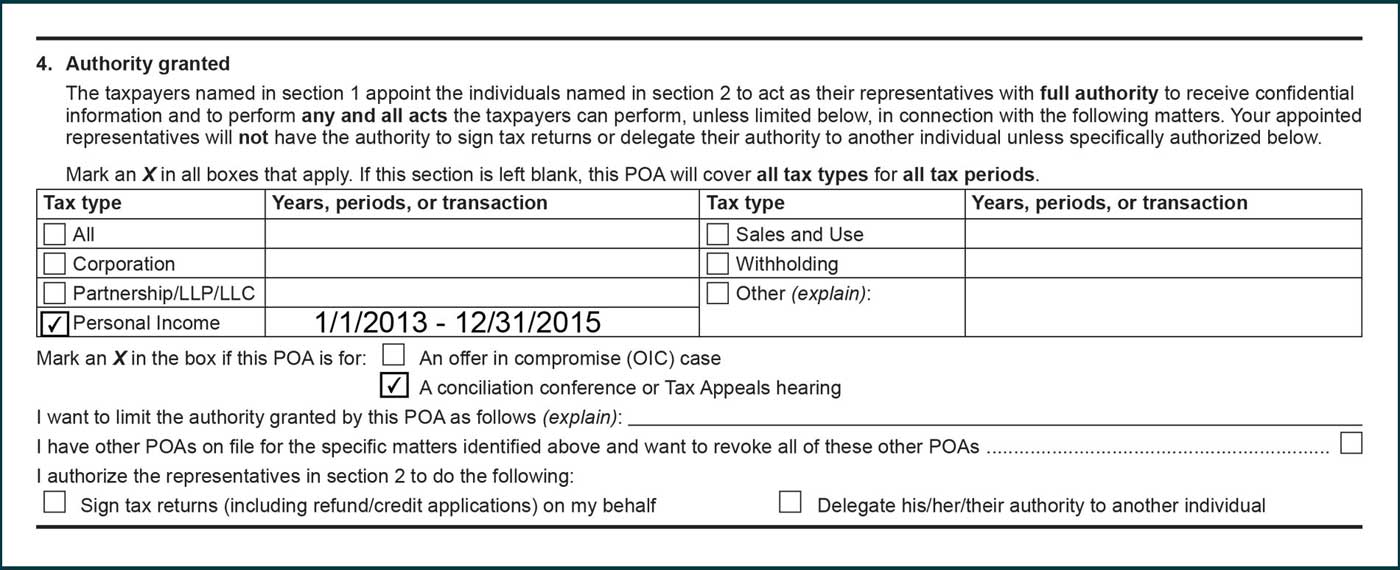
Example: When your Form POA-1 includes a limitation
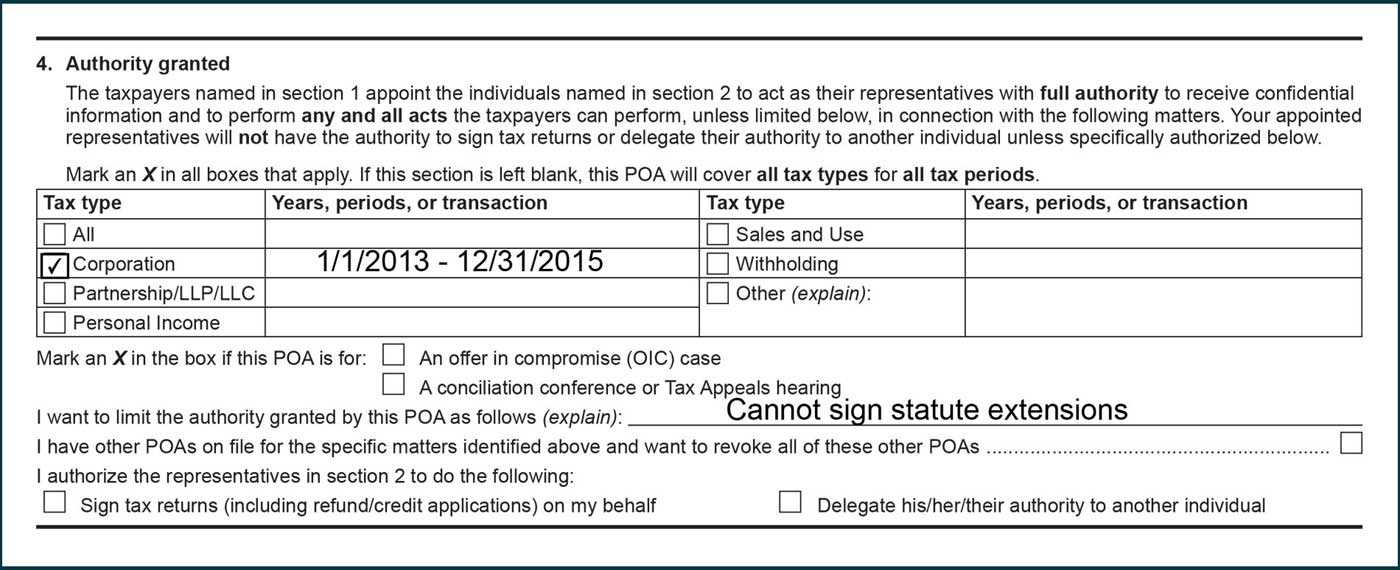
Example: When your Form POA-1 is only for a specific period
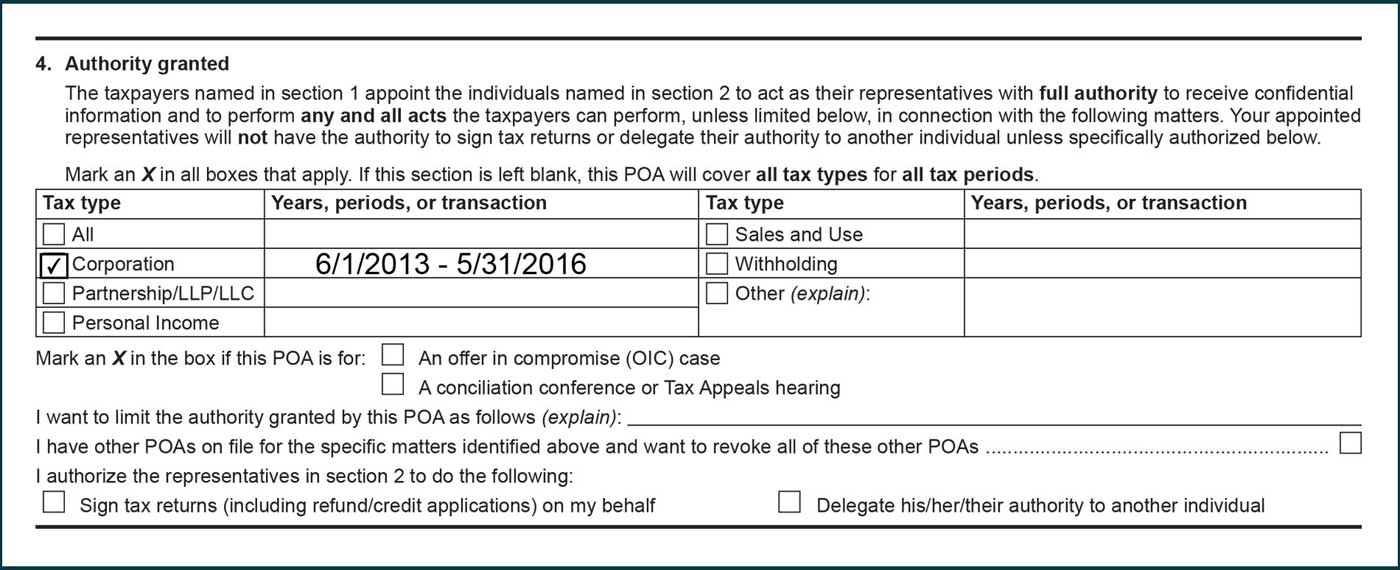
Example: When your Form POA-1 is only for a specific transaction
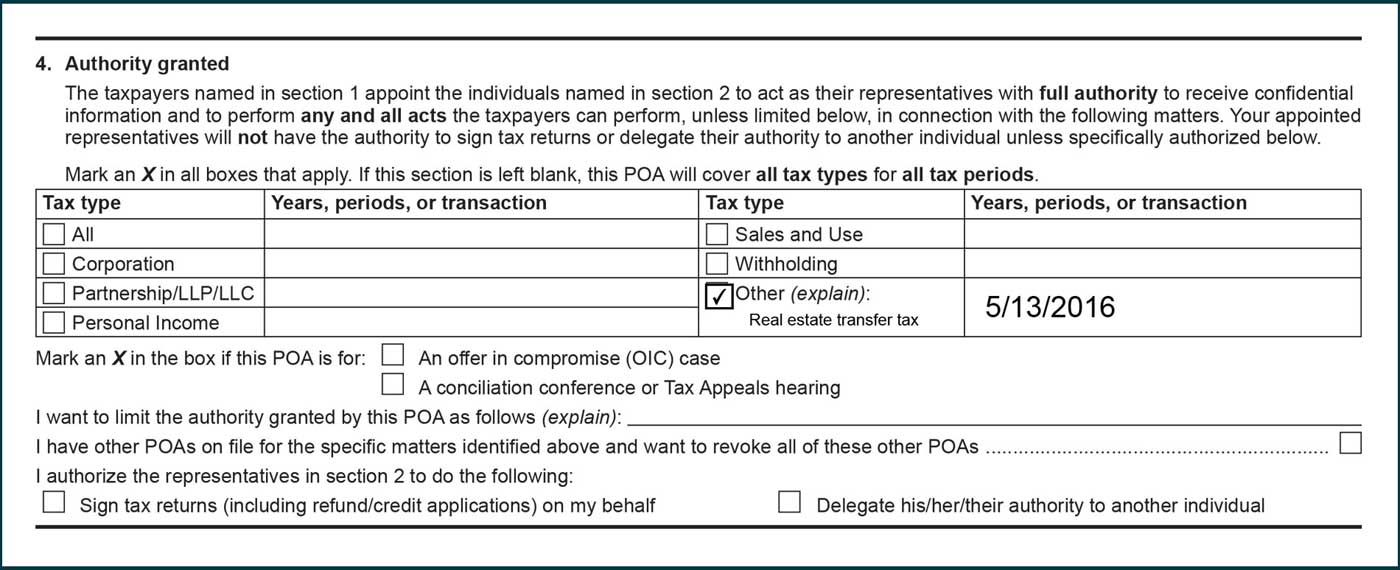
Example: When you need to attach additional documentation identifying representatives
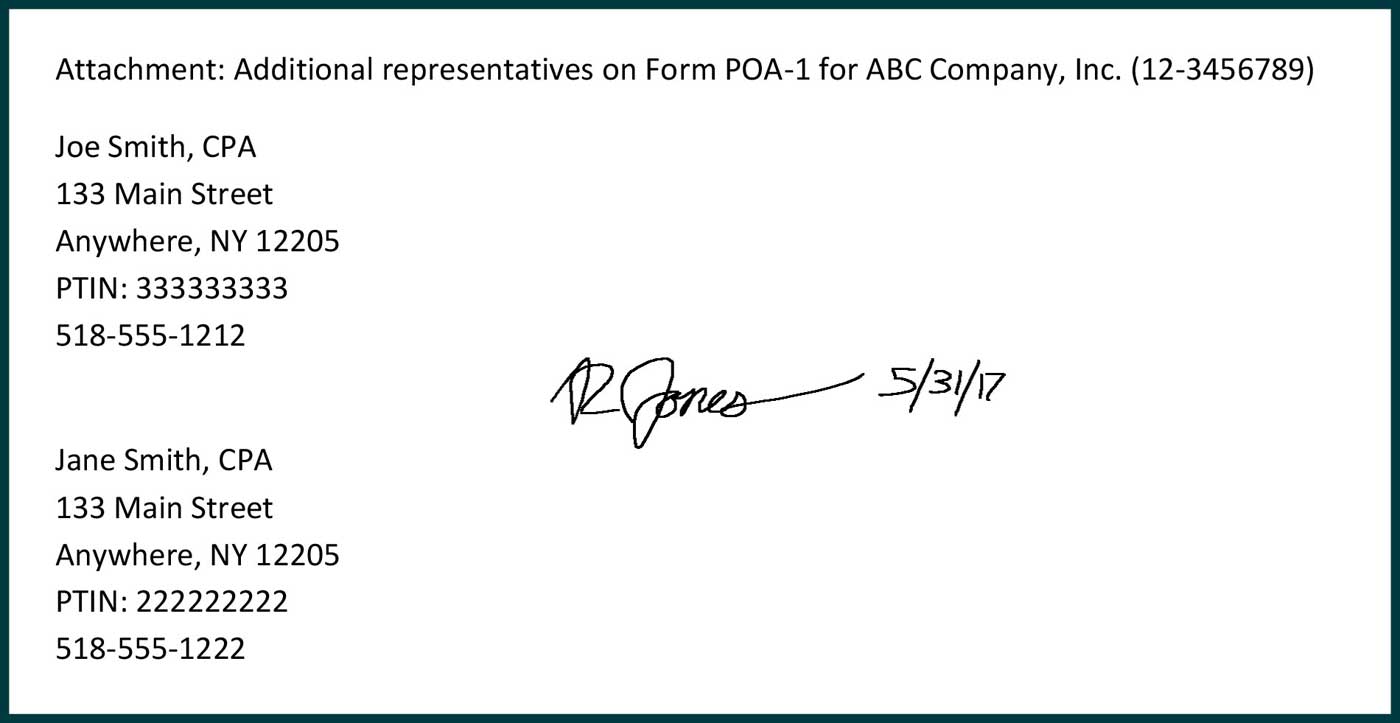
Example: When your representative needs to withdraw
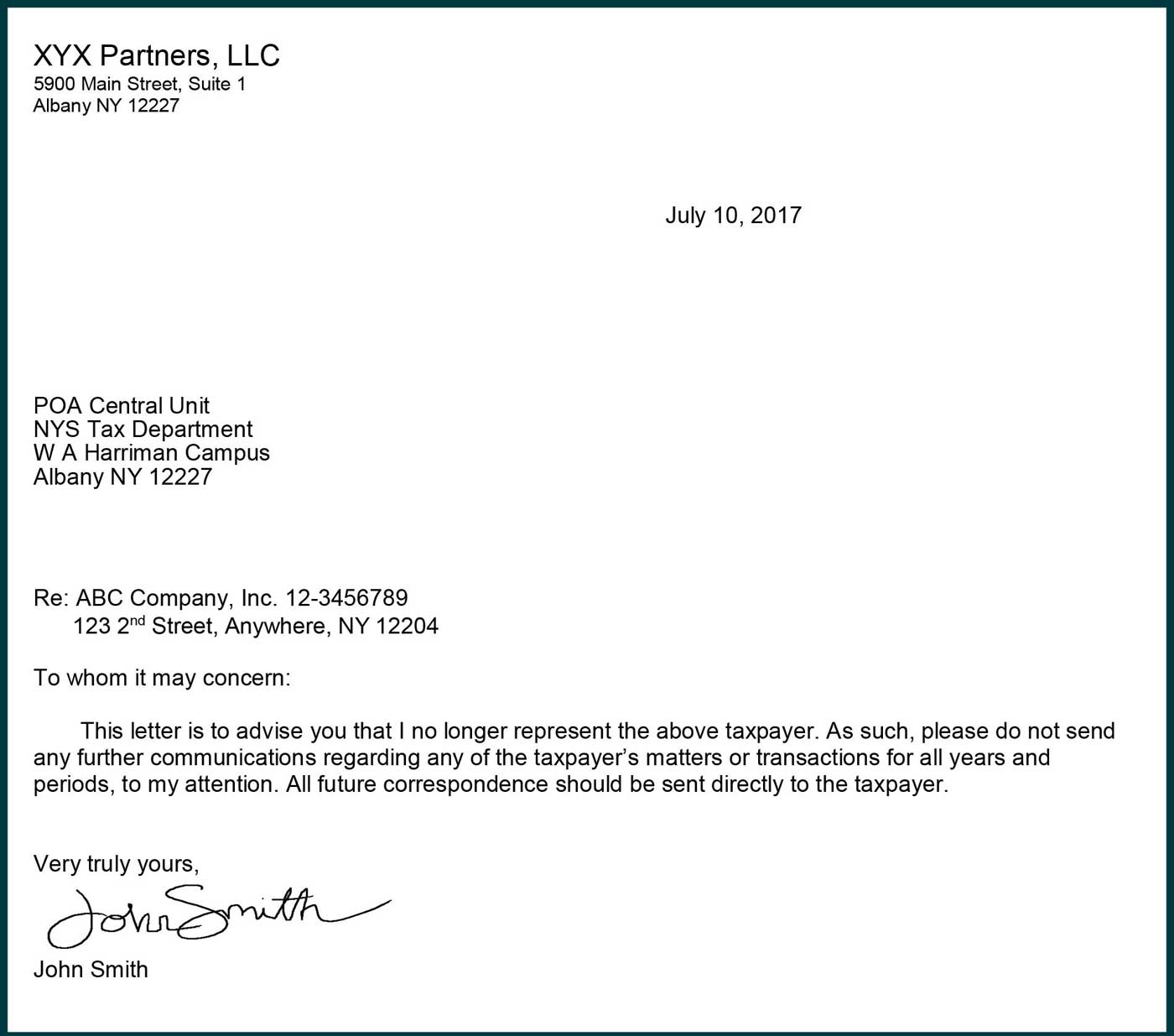
Example: When you need to revoke

Example: When you're ready to sign

Resources
- Form POA-1: additional information
- Power of attorney and other authorizations
- Form POA-1, Power of Attorney
- Notice N-17-9, New Rules to Simplify and Expedite the Processing of Powers of Attorney
Updated: